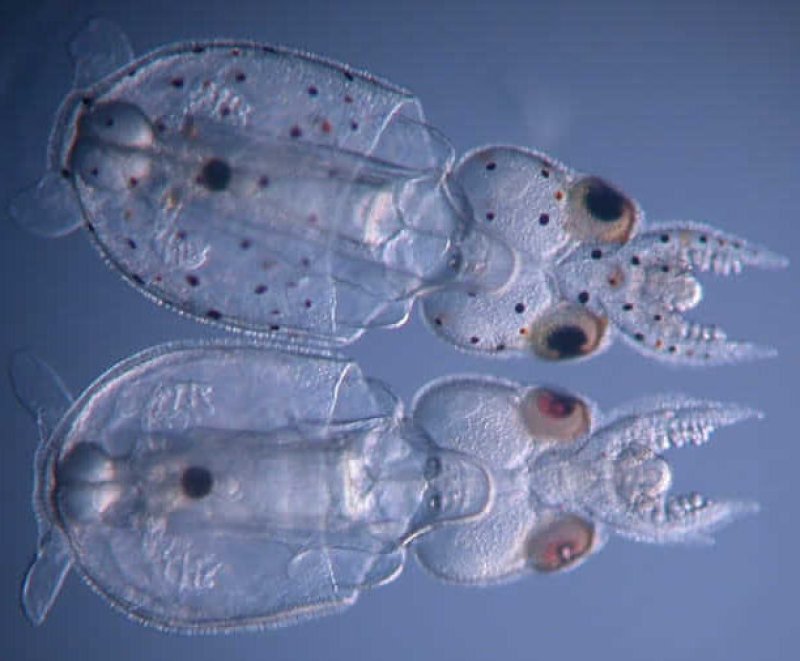Researchers at the Marine Biological Laboratory used CRISPR-Cas9 genome editing to eliminate a gene in embryos of the squid Doryteuthis pealeii, which removed the pigment from their eye and skin cells, according to Joshua Rosenthal, a senior scientist and study author.
Rosenthal said one of the biggest challenges was delivering the gene editing system through the tough outer layer of the embryo, a procedure that involved clipping the egg with microscissors.
The squid typically have dark eyes and an array of black and reddish brown spots across their bodies while the genetically altered hatchlings have light pink or red eyes and almost no dark spots.
The milestone, which was first reported in Current Biology [August 6], could pave the way for researchers to study the biology of cephalopods like squid, octopus and cuttlefish the same way they study more common lab animals like study mice and fruit flies.
“This is just a first step to showing that the capabilities are out there,” Rosenthal said, noting that squids have more than 25,000 genes to which this technology could be applied. “This paper is really opening up a new species for biological interrogation.”
Rosenthal said he hopes to use this technology to further his own research into how this squid and other cephalopods edit their own mRNA, which could have biomedical applications, like pain management therapy.































